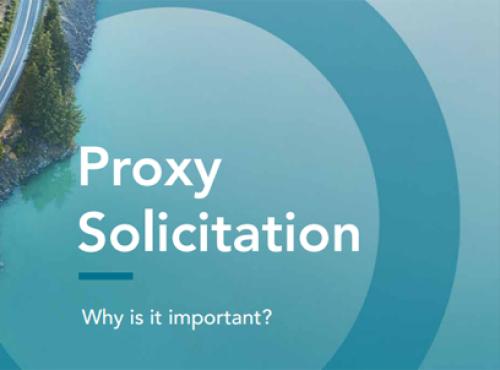When Danish biotech Genmab raised $582 mn on Nasdaq in a secondary listing in 2019, it set a record for the biggest IPO of a European biotech on the exchange. The company had been public – listed on Nasdaq Copenhagen – for almost 20 years, and already had an ADR program in the US, when it decided to go for a full secondary listing in New York.
But the key motivation behind the listing – for which the company was a runner-up in the best IR for a corporate transaction category at IR Magazine’s 2020 Europe Awards – wasn’t to raise capital, says Andrew Carlsen, senior director and head of investor relations at the firm. And that’s because Genmab is one of those rare things in the biotech industry: a profitable company.
Unlike many biotechs that go to market repeatedly over the years looking to pump more cash into what can be a decades-long pipeline, Genmab was heading to the US with a blockbuster already under its belt. In pharmaceutical terms, a blockbuster drug is one that has been accepted by prescribing physicians as a therapeutic standard. That’s what Genmab has in its anti-cancer treatment DARZALEX. The company also has two more potential blockbusters in the pipeline – and what this means is royalties.
Genmab began to ‘outlicense’ products to big pharma in 2013, explains Carlsen. ‘Janssen Pharmaceuticals has DARZALEX and we get between 12 percent and 20 percent of net sales in royalties – and that is, of course, generating our revenue,’ he says.
And it’s not just that the company has turned a profit, either. It’s also that the profit is sustainable, which was a key part of the company’s investor education around the IPO, Carlsen points out.
‘Genmab’s unique profile for a biotech, being sustainably profitable because of the recurring revenue streams derived from the partnered marketed antibodies, together with potential upside from our novel and proprietary pipeline, resonated well with both generalists and specialist investors,’ he explains.
This profitability ‘put us in a privileged position [going into the IPO] in the sense that it took away some of the concerns around us having to come back to the market to raise additional capital,’ he adds.
So if money wasn’t the primary motivation for the listing, what was? It was really about broadening the shareholder base, boosting representation from biotech specialists and generalist healthcare funds and adding more institutions to the register, says Carlsen. And the company has succeeded in its goals.
‘Before the IPO we had roughly 38 percent US shareholders; now we’re north of 50 percent,’ Carlsen notes. US analyst coverage got a boost, too, both from ‘outsiders’ and firms engaged on the listing – Carlsen cites Guggenheim and Morgan Stanley, both of which worked on the IPO, as having initiated coverage, for example. In addition, the listing has given Genmab access to a much larger pool of investors as well as raising the company’s profile in the US.
‘From an IR perspective it has been – and continues to be – highly motivating and rewarding to help potential new and existing investors understand and appreciate the value proposition in Genmab and the progress we are making toward our 2025 vision of making a difference for cancer patients,’ Carlsen says.
The company completed its listing, and subsequent roadshow, before the Covid-19 pandemic, but Carlsen says that thanks to everyone’s easy shift to virtual, maintaining contact with Genmab’s new US investors has been without major challenges. ‘Last year we actually surpassed the IR activities of 2019 – even with the IPO,’ he says. ‘I think that’s a significant achievement.’
He also has some advice for companies considering the US for a dual listing. ‘If you believe you have a unique value proposition and you have almost exhausted the opportunities from your primary listing, a dual listing in the US is a good way to broaden and diversify the investor base,' he says.
‘You have to understand the company’s value proposition thoroughly, however – and be prepared to explain it convincingly. Remember that investors in the US and globally are presented with numerous IPOs each year: why should they participate in yours?’
This article originally appeared in the Spring 2021 issue of IR Magazine










